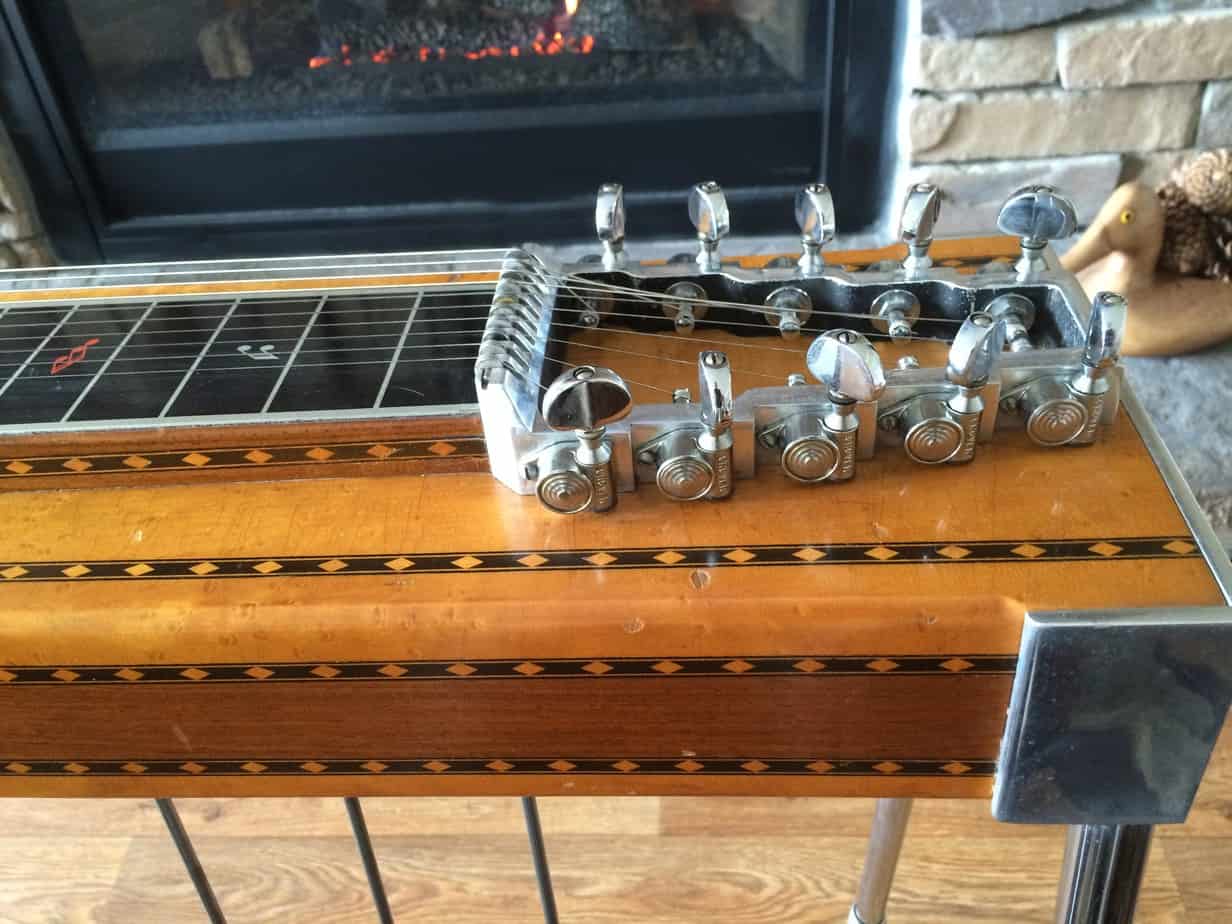Learning how to play the pedal steel guitar can be fun, rewarding, and worthwhile. The process of learning, and the challenges involved with this intricate instrument, are part the journey. Using strategies that can make practicing more efficient and beneficial, a player can improve their playing with enjoyable outcomes.
Here are some practice strategies that I have found useful when learning this instrument:
Chunking
There is so much involved with learning to play music and an instrument that it can feel like climbing a mountain…but mountains are climbed one step at a time. The same idea can be applied to practicing pedal steel. Breaking down the material and techniques that need to be learned into “chunks” can provide more focus to attain important goals.
If a player’s goal is to spend a little time each day working on technique, scales, and tunes, then finding a good exercise to work on for each of these categories is important. There are multiple aspects of technique that are important to learn, plenty of scales, and thousands of tunes. It can feel overwhelming to think about how much there is to learn, so choosing one area out of each category to focus on for practice sessions can provide direction, focus, and the time necessary to truly learn: after all, the key to learning is repetition.
I recommend choosing an exercise for each category and working on it for a few weeks before moving on to the next goal. For technique, this may mean focusing on bar control by doing a 15 minute exercise centered around this each day. For scales, working on the major scale and the Mixolydian scale each practice session may be more beneficial than trying to learn every scale/mode at once. For tunes, working on the verse over and over again until you have it down may be more beneficial than noodling between every section without truly getting them down.
After three weeks of practicing one particular thing each day, a player will see significant gains in that area. This is a good time to move on to another exercise, and begin building a new foundation. These foundations can provide good leverage for climbing the pedal steel mountain.
Consistency
The more a player can successfully complete their playing objective (i.e. hitting a right note, or playing a lick accurately up-to-speed) the easier it will be to repeat this. So when practicing it is important to try to repeat successful results more often than unsuccessful ones.
If a player completes a picking exercise successfully three out of four times, then they are building a habit of playing it accurately more often than not. Doing this more and more often, until it can be done successfully 9 out of 10 times, will build consistency of success.
If they are only completing it successfully one out of five times, then they may find it beneficial to alter their practice routine so that more successes can be made more of the time. This may mean slowing the metronome down a bit until one can play it successfully more often, then speed it up slowly until the same can be done at the next speed.
Once a player can successfully repeat something over and over again accurately, it is a good time to move on to something more challenging and push for growth instead of being stagnant. If a player can’t repeat something successfully more often than not, then it is a good time to change some variables to make it easier to. After all, you have to crawl before you can walk.
Timing
It is important to practice smart, not harder. A player may be able to make just as many gains from practicing efficiently for 10 minutes, than inefficiently for 2 hours. During your practice session, ask yourself: am I focused enough right now to truly be productive on the task at hand? If not, is it because your fingers are tired, or are you distracted by your friend’s text messages, or maybe you’re hungry cause you haven’t eaten yet today?
Know your limits, and if you begin making more mistakes than earlier in the practice session, then it may be a good idea to take a break. (Mistakes are OK!, but just make sure you aren’t making more of them because your practice session has lost its steam.) When you notice you need a break, here are some things that can help refresh you: go for a walk, do a quick stretch, eat a granola bar, listen to a couple of inspiring songs, or maybe just take some deep breaths. Effective practice builds good playing habits, and getting in the habit of practicing effectively is making the best of both worlds.
Remember that practicing and learning requires making mistakes, so make the most of learning from them and have fun! Understanding how to practice effectively, and how to improve one’s playing, can be rewarding and can yield significant gains. Using these strategies can give a player more ideas on how to do this.
For more practice strategies click below:


